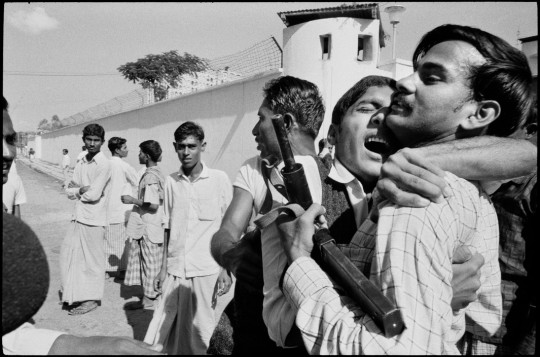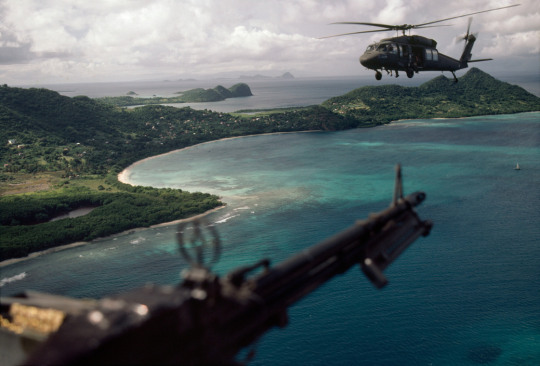#Abbas Attar
Explore tagged Tumblr posts
Text


Abbas Attar's photographs of Dhaka on December 16, 1971: when the Pakistani Armed Forces finally surrendered to Mukti Bahini, ending the nine-month Liberation War and 1971 Bangladesh genocide and marking the official secession of East Pakistan to become the new state of Bangladesh. Bangladesh commemorates this day as Victory Day (বিজয় দিবস) to honour the martyrs who laid their lives down in the war.
#বিজয় দিবসের অনেক শুভেচ্ছা সকলকে#and one day we will celebrate a victory day for palestine#bangladesh#bangla tag#victory day#bangladesh liberation war#bengali#south asia#asia#history#historical photos#south asian history#ph#ots#abbas attar#iranian artist
557 notes
·
View notes
Photo

A woman in a dust storm, Village of San Agustin de Opan, Mexico, 1985 - by Abbas (1944 - 2018), Iranian/French
149 notes
·
View notes
Text

📷 Photo above: Abbas wears helmet and flack-jacket while covering the war in South Vietnam, 1973
Daily inspiration. Discover more photos at Just for Books…?
23 notes
·
View notes
Text

U.S. Army UH-60A Black Hawk helicopters flying over Carriacou shortly after the criminal United States invasion of Grenada of October 25, 1983. Photographer: Abbas Attar (1944–2018)
#Abbas Attar#1983#Grenada#invasion#Abbas#United States#M60D#UH-60#Sikorsky#helicopter#war#imperialism#machine gun#island#tropics#Paradise Beach#Mount Saint Louis#Argyle#Magnum Photos#Hillsborough Bay#Urgent Fury#Caribbean
29 notes
·
View notes
Text

IRAN. Tehran. January 1979. A revolutionary mob exhibits the burned body of a presumed prostitute as evidence of the atrocity of the Shah's regime - Abbas Attar
3 notes
·
View notes
Text

#Abbas Attar's 80th Birthday#Today#GIF#AnimatedGIF#Animated GIF#Animation#GoogleDoodle#Google Doodle#google#doodle#GoggleDoddle#Photo
0 notes
Text

Abbas Attar. Horse, Rajastan, India, 2013.
76 notes
·
View notes
Text

Al-Aqsa Martyrs' Brigade fighter, Second Intifada, Gaza City, 2004.
Photograph: Abbas Attar
61 notes
·
View notes
Text

Tehran, Iran, 2001
A scene inside a fashionable coffee house
Photograph: Abbas Attar
36 notes
·
View notes
Text

Abbas Attar - Collapsing Building , Belfast, 1972
4 notes
·
View notes
Text

Born a photographer March 29, 1944. Abbas Attar was an Iranian transplanted to Paris. He dedicated himself to documenting the political and social life of societies in conflict. In a career that spanned six decades, he covered wars and revolutions in Biafra, Bangladesh, Northern Ireland, Vietnam, the Middle East, Chile, Cuba, and South Africa during apartheid. He also documented life in Mexico over several years, and pursued a lifelong interest in religion and its intersection with society.
From 1978 to 1980, Abbas photographed the revolution in Iran, to which he returned in 1997 after seventeen years of voluntary exile. His book Iran Diary 1971-2002 is a critical interpretation of Iranian history, photographed and written as a private journal.
During his years of exile Abbas traveled constantly. Between 1983 and 1986 he journeyed through Mexico, attempting to photograph a country as a novelist might write about it. The resulting exhibition and book, Return to Mexico: Journeys Beyond the Mask, helped define his photographic aesthetic.
From 1987 to 1994, he focused on the growth of Islamism throughout the world. Allah O Akbar: A Journey Through Militant Islam, the subsequent book and exhibition, spanning twenty-nine countries and four continents, attracted special attention after the 9/11 attacks by Islamic jihadists. A later book, Faces of Christianity: A Photographic Journey (2000), and touring show, explored Christianity as a political, ritual and spiritual phenomenon.
Abbas’s concern with religion led him in 2000 to begin a project on animism, in which he sought to discover why non-rational ritual had re-emerged in a world increasingly defined by science and technology. He abandoned this undertaking in 2002, on the first anniversary of 9/11, to start a new long-term project about the clash of religions, defined as a culture rather than faith, which he believed are turning into political ideologies and therefore one of the sources of the strategic struggles of the contemporary world.
From 2008 to 2010 Abbas travelled the world of Buddhism, photographing with the same skeptical eye. In 2013, he concluded a similar long-term project on Hinduism.
Most recently before his death, Abbas was working on documenting Judaism around the world.
A member of Sipa from 1971 to 1973, then of Gamma from 1974 to 1980, Abbas joined Magnum Photos in 1981 and became a member in 1985.
On Wednesday April 25, 2018 the Iranian photographer Abbas Attar known simply as Abbas, died in Paris, aged 74.
According to Abbas, in a 2017 interview with Magnum, there are two photographic methods: “One is writing with light,” he said, “and the other is drawing with light.” While he viewed other Magnum photographers like Henri Cartier-Bresson as adherents of the latter, the former was the foundation of Abbas’ practice. In lieu of placing his focus on single moments in time, he looked at his photographs as interlinked elements of a greater whole. In this sense, Abbas was a storyteller, and his images were pages of tales on celluloid, which were no less arresting when viewed (or rather, read) in isolation.
In the same interview, Abbas noted that it was a 1968 trip to New Orleans that made him understand the importance of what he called “sequencing”, or creating a narrative thread through a series of images. Examples of this can be seen in Abbas’s book Return to Mexico: Journey Beyond the Mask (1992), a document of his travels through the country in the 1980s.
His books aside, Abbas’ work has been the subject of exhibitions in galleries and museums around the world, including the Tehran Museum of Contemporary Art, the National Museum of Singapore, Galerie FNAC and the Magnum Gallery in Paris, and the Grey Art Gallery at New York University.
“It is with immense sadness that we lose him,” Dworzak said. “May the gods and angels of all the world’s major religions he photographed so passionately be there for him.”
Daily inspiration. Discover more photos at Just for Books…?
13 notes
·
View notes
Text

Abbas Attar - IRAN. Tehran. February 1979. Refa School. A crowd of chador clad women welcome Ayatollah Ruhullah KHOMEINY upon his return from exile.
3 notes
·
View notes
Video
youtube
Hezbollah's leader calls device blasts 'declaration of war' | DW News

IDF official announcement: The following Hezbollasses have been confirmed eliminated during a meeting with Radwan Force commanders in the Dahieh neighborhood of Beirut.
1. Ibrahim Aqil, head of operations and commander of Hezbollah's Radwan Force.
2. Abu Hassan Samir, head of the Radwan Force training unit.
3. Samer Abdul-Halim Halawi, Commander of the coastal area.
4. Abbas Sami Maslamani, Commander of the Qana area.
5. Abdullah Abbas Hajazi, Commander of the Ramim ridge area.
6. Muhammed Ahmad Reda, Commander of the Al-Khiam area.
7. Hassan Hussein Madi, Commander of the Mount Dov area.
8. Hassan Yussef Abad Alssatar, responsible for Radwan Force operations.
9. Hussein Ahmad Dahraj, Chief of Staff of the Radwan Force.
10. Mohammad Kassem al-Attar, Commander of Training Department
11. Hassan Ali Hussein, commander of Aziz unit
12. Mahmoud Yassin Hamad, senior Radwan officer

The Thinning of Hezbollah's Chain of Command.
0 notes


